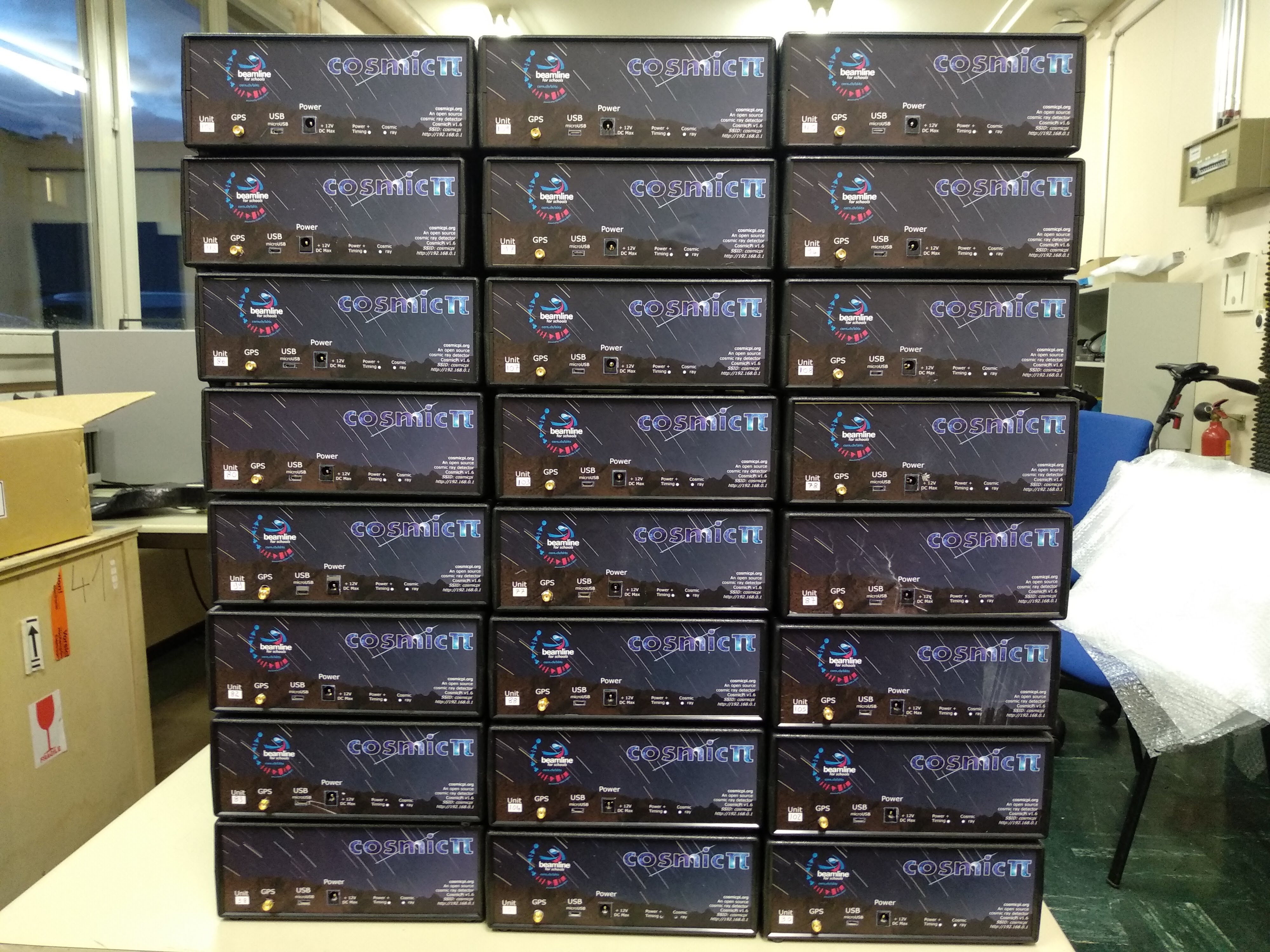Cosmic Pi - The Recipe
Cosmic Pi –
The ingredients for our recipe!
We have a
lot of detail about how to assemble a Cosmic Pi unit, how to build the PCB and
populate it, and how to program it once assembled. However we don’t really have
anywhere that details the complete list of ingredients
for all those parts which go together to make the actual detector. So here is the full list, from the outside in:
Case:
Hammond 1598JBK (modified reference BASMOD2505), a plastic case with metal
front and rear panels. The modifications are for the milling of the front panel
to allow connectors to pass through.
Sticker: We
laser print AVERY 210X297MM White L4775 sticky labels then cut them (with
either a laser, or just scissors depending upon how many lasers we have access
to).
Internal
fittings and fixings: We use 4 M3 grub screws, 6 M3 nuts and 8 M3 bolts (approx.
6mm length) for all internal fixings (PCB to case, PCB supports, scintillators),
and small size wood screws to fix our scintillator supports (approx. 20mm
length). We also use two Ettinger 90 degree-mounting
brackets to support the Silicon Photo-Multipliers (SiPM)
snap-out of the PCB, they are available from Farnell, part number 14.86.313, with 2 being required per Cosmic
Pi.
Scintillators:
For Cosmic Pi versions 1.6 and 1.7 we use two
10x100x200mm scintillators from Amcrys/ISMA in the Ukraine.
The scintillators are pre-drilled, with two 3mm wide
by 6mm deep round holes, by the manufacturer that allow for the mounting of the
scintillators against the SiPM carrier snap-out. The designation
of the scintillator type we use is UPS-923A, which refers to the chemical
composition (Amcrys/ISMA product type). If you are
unable to obtain this type of scintillator, you should be able to use Saint Gobain BC-408 or other equivalent plastic scintillator
material.
Wrapping:
The scintillators are individually wrapped in a sheet of aluminium foil (as you probably have in your kitchen!) and
sealed up with normal black PVC tape, of the kind used by electricians for
electrical isolation. Don’t forget to leave a
small hole for the SiPM connection!
Printed
Circuit Board (PCB): We have a four layer printed circuit board, the design is
available from our github repository (github.com/cosmicpi) along with a full Bill
Of Materials (BOM) – for our V 1.6 units and the with some minor changes for
our V1.7
units here. The components are generally available electronics, with the
exception of the SiPM modules. These are very
specialist, high sensitivity photon detectors (sensitive to one or two photons!)
which we obtain from Ketek. Each Cosmic Pi unit
contains two sensors, of type PM3325-WB. You can find more details and buy the
sensors from the ketek website at ketek.net who are based
in Germany. The printed circuit board is made from FR4, a typical circuit board
material and we apply a lead-free process to all the units we make.
Raspberry
Pi: It wouldn’t be a Cosmic Pi without the Raspberry!
Each unit has one Raspberry Pi Zero WH single board computer inside the case,
complete with a 16 Gb SD card. The Raspberry Pi runs
the Wi-Fi interface of the device and the SD card provides all the software
that allows you to access and interact with your detector.
Foam, tape
and plastic supports: We install some black plastic foam and tape as a light
screen within the box, since the scintillators and SiPM
are very sensitive to stray light. We also use 3 C shaped plastic supports to
hold the scintillator in place.
Accessories:
In addition to everything inside the box, we also ship with a 9V AC/DC power
adapter (the kind of thing that many appliances use for power) and a magnetic
GPS antenna module (of the type you would use to add an additional GPS receiver
to your car). These plug in to the front of the box in order to make it work.

